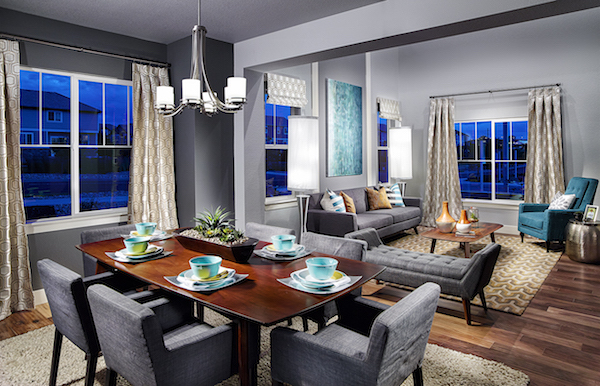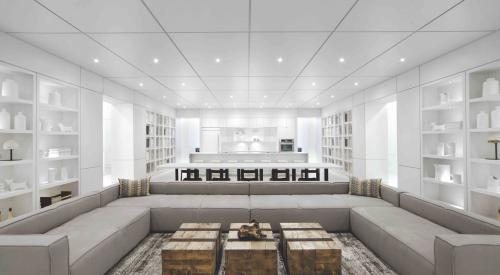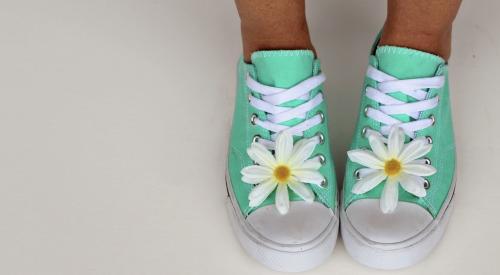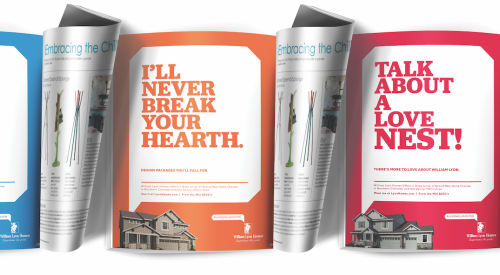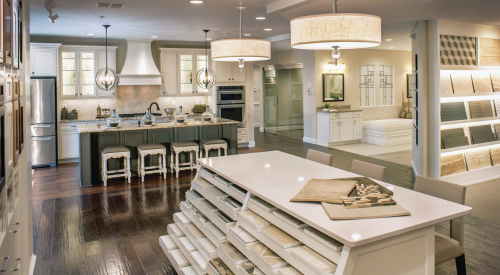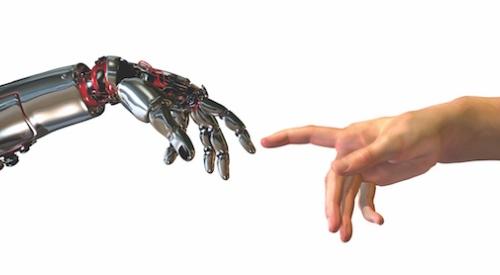Angela Harris started her company almost 17 years ago to help production home builders define their brand and target homebuyers through the design process. Her approach  melds market research with merchandising (one of Harris’ first jobs was handling retail displays for Gap) to create interior spaces in model homes that are more salable and appeal to consumers because they offer a lifestyle that consumers are trying to cultivate—and builders are trying to sell. Trio Environments has since grown to a 13-member staff in Denver with a satellite office in New York, and a client roster that includes Ryland Homes, Capital Pacific Homes, and Elacora.
melds market research with merchandising (one of Harris’ first jobs was handling retail displays for Gap) to create interior spaces in model homes that are more salable and appeal to consumers because they offer a lifestyle that consumers are trying to cultivate—and builders are trying to sell. Trio Environments has since grown to a 13-member staff in Denver with a satellite office in New York, and a client roster that includes Ryland Homes, Capital Pacific Homes, and Elacora.
Q: Can you explain what you mean when you say Trio “provides design that understands marketing”?
A: I think there is this beautiful fusion between marketing and design, and I think that when we look at our models and sales centers, it’s really more of a sales and marketing technique than anything else. It just happens to get executed through the design process. So when we take on these projects, it’s about studying the demographics, studying the psychographics, studying the competitive analysis, studying the consumer behavior. Finding the balance between the marketing and design to execute on an actual sales tool is what we are looking at.
Q: Home building isn’t necessarily thought to be a category where a lot of branding occurs. Are builders thinking more about what their brand is?
A: I think we have a niche in the marketplace, and we’re fortunate because my undergrad is in marketing [University of Colorado at Boulder] so we understand that aspect of it. My master’s is in sustainable design, so it really is a beautiful thing to bring those two pieces together. We’ve been building models for over 15 years, and it’s always been that traditional approach of oh yes, we know what our demographic is; we know what our psychographic is; and … how do we get that integrated into the models in terms of memory points?
We obviously do that as a foundation, but there is a whole other layer that we’re doing in the marketplace, such as how do we provide the experience for the buyer in terms of color and feeling through intentional design and capture that branding? It’s no longer just the tagline that the buyers are looking at—that’s old advertising. The minute they see a strong brand in the marketplace, whether it’s in home building or not, they have an emotional connection to it. It’s up to us to deliver on that emotional connection.
Q: What motivated you to pursue a master’s in sustainability before sustainability was cool?
A: That was more of a personal initiative; a goal for myself. Our company culture is really centered around the people, and we saw in the marketplace that we could design healthier environments. It just became part of our company culture.
Q: Do you try to find out what the builder’s brand is or discover something that can be developed into the builder’s brand?
A: Our builders are all so different and they are at different stages of their brand promise. That’s what we look at when they come to us to help with their models and do design work. Really, for us, [the question is] how are we going to deliver on that experience for the buyer; how are we going to deliver on that experience or the brand promise that the builder actually has?
They’re all at different stages in that game. Some are very strong national brands, and we make sure that gets articulated through the model home experience. Some are smaller and are new builders to the market, which makes it even more important that we really make that brand stand out and speak to the buyer.
Q: What are some of the tools and methods Trio uses to define or discover a builder’s brand and connect those elements to a target buyer/geographic market?
A: We go through a discovery process with our builders, so it’s more of a design charrette where all that stuff will come to light through discovery questions. The beautiful thing about the market now is this holistic design approach or experience for the buyer. We really try to connect from the minute they walk into the model home complex; we look at what their experience is with the sales center, and how that gets articulated all the way through the model home tour.
Q: What are some ways a builder client can show its brand in a model home?
A: We have a good example with a new builder—Elacora—to our market here. When we sat down for the discovery process, we could see it was important to them that the buyer actually have a feeling that was light and bright, airy and cheery, and very much more of a retail experience. Not only did we articulate that through the sales center, we integrated it into the model by creating their logo on textiles in a very subtle way, creating that with tone on tone pink throughout the model. Not that pink stood out, but the tones subconsciously created a consistency for the buyer through the whole experience. The model home was bright and airy, so it spoke to the brand messaging, the tagline, and the logo. Elacora’s logo is a bloom, with different pops of bright color. We took that and carried it through the model with pillows, textiles, and tone on tone with the paint.
